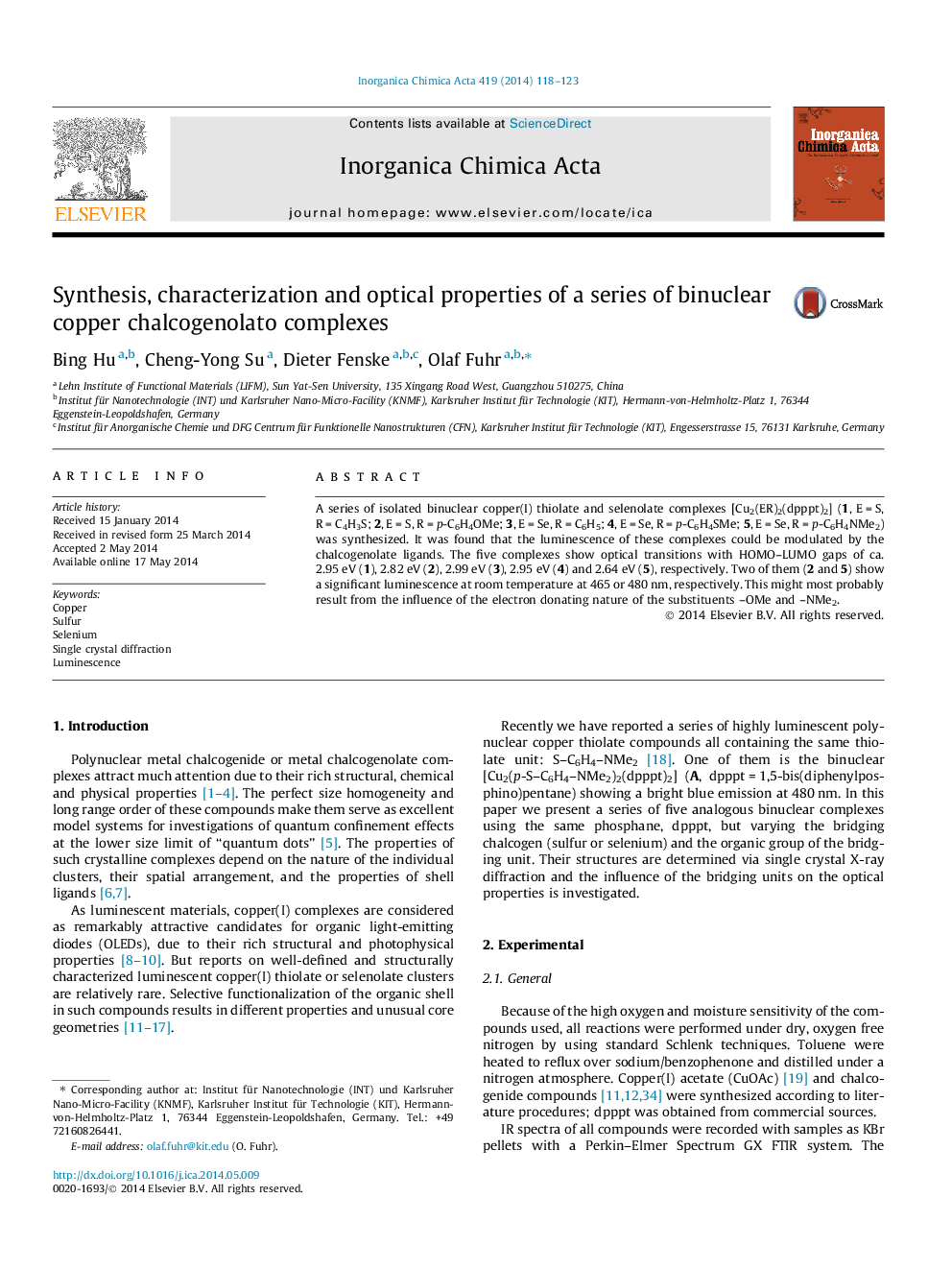| Article ID | Journal | Published Year | Pages | File Type |
|---|---|---|---|---|
| 1309612 | Inorganica Chimica Acta | 2014 | 6 Pages |
•Synthesis of a series of five structurally similar binuclear copper(I) complexes.•Investigation of absorption and emission properties.•[Cu2(S–C6H4OMe)2(dpppt)2] shows significant luminescence at 465 nm.•[Cu2(Se–C6H4NMe2)2(dpppt)2] shows significant luminescence at 480 nm.
A series of isolated binuclear copper(I) thiolate and selenolate complexes [Cu2(ER)2(dpppt)2] (1, E = S, R = C4H3S; 2, E = S, R = p-C6H4OMe; 3, E = Se, R = C6H5; 4, E = Se, R = p-C6H4SMe; 5, E = Se, R = p-C6H4NMe2) was synthesized. It was found that the luminescence of these complexes could be modulated by the chalcogenolate ligands. The five complexes show optical transitions with HOMO–LUMO gaps of ca. 2.95 eV (1), 2.82 eV (2), 2.99 eV (3), 2.95 eV (4) and 2.64 eV (5), respectively. Two of them (2 and 5) show a significant luminescence at room temperature at 465 or 480 nm, respectively. This might most probably result from the influence of the electron donating nature of the substituents –OMe and –NMe2.
Graphical abstractThis paper describes a series of isolated binuclear copper(I) thiolato and selenolato complexes [Cu2(ER)2(dpppt)2]·(E = S or Se, R = org. group). Depending on the organic group of the bridging chalcogenolate these compounds can be luminescent or not. A very intensive bluish emission at 465 nm is found for the sulfur-bridged complex [Cu2(S–C6H4–OMe)2(dpppt)2].Figure optionsDownload full-size imageDownload as PowerPoint slide
